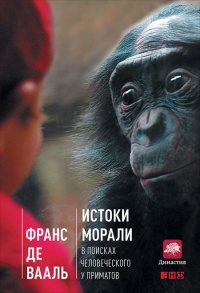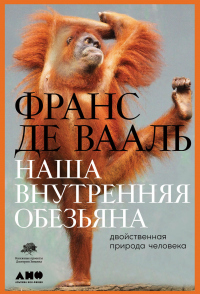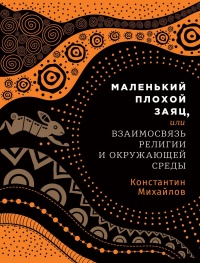Книга Достаточно ли мы умны, чтобы судить об уме животных? - Франс В.М. де Валь
Шрифт:
Интервал:
Закладка:
Bolhuis, J. J., and C. D. L. Wynne. 2009. Can evolution explain how minds work? Nature 458:832–33.
Bonnie, K. E., and F. B. M. de Waal. 2007. Copying without rewards: Socially inf luenced foraging decisions among brown capuchin monkeys. Animal Cognition 10: 283–92.
Bonnie, K. E., V. Horner, A. Whiten, and F. B. M. de Waal. 2006. Spread of arbitrary conventions among chimpanzees: A controlled experiment. Proceedings of the Royal Society of London B 274:367–72.
Bovet, D., and D. A. Washburn. 2003. Rhesus macaques categorize unknown conspecifics according to their dominance relations. Journal of Comparative Psychology 117:400–5.
Boyd, R. 2006. The puzzle of human sociality. Science 314:1555–56.
Boysen, S. T., and G. G. Berntson. 1989. Numerical competence in a chimpanzee (Pan troglodytes). Journal of Comparative Psychology 103:23–31.
–. 1995. Responses to quantity: Perceptual versus cognitive mechanisms in chimpanzees (Pan troglodytes). Journal of Experimental Psychology: Animal Behavior Processes 21:82–86.
Bramlett, J. L., B. M. Perdue, T. A. Evans, and M. J. Beran. 2012. Capuchin monkeys (Cebus apella) let lesser rewards pass them by to get better rewards. Animal Cognition 15:963–69.
Bräuer, J., et al. 2006. Making inferences about the location of hidden food: Social dog, causal ape. Journal of Comparative Psychology 120: 38–47.
Bräuer, J., and J. Call. 2015. Apes produce tools for future use. American Journal of Primatology 77:254–63.
Breland, K., and M. Breland. 1961. The misbehavior of organisms. American Psychologist 16:681–84.
Breuer, T., M. Ndoundou-Hockemba, and V. Fishlock. 2005. First observation of tool use in wild gorillas. Plos Biology 3:2041–43.
Brosnan, S. F., et al. 2010. Mechanisms underlying responses to inequitable outcomes in chimpanzees. Animal Behaviour 79:1229–37.
Brosnan, S. F., and F. B. M. de Waal. 2003. Monkeys reject unequal pay. Nature 425:297–99.
–. 2014. The evolution of responses to (un) fairness. Science 346:1251776. Brosnan, S. F., C. Freeman, and F. B. M. de Waal. 2006. Partner's behavior, not
reward distribution, determines success in an unequal cooperative task in capuchin monkeys. American Journal of Primatology 68:713–24.
Brown, C., M. P. Garwood, and J. E. Williamson. 2012. It pays to cheat: Tactical deception in a cephalopod social signalling system. Biology Letters 8:729–32. Browning, R. 2006 [orig. 1896]. The Poetical Works. Whitefish, MT: Kessinger. Bruck, J. N. 2013. Decades-long social memory in bottlenose dolphins. Proceedings of the Royal Society B 280: 20131726.
Bshary, R., and R. Noë. 2003. Biological markets: The ubiquitous inf luence of partner choice on the dynamics of cleaner fish-client reef fish interactions. In Genetic and Cultural Evolution of Cooperation, ed. P. Hammerstein, 167–84. Cambridge, MA: MIT Press.
Bshary, R., A. Hohner, K. Ait-El-Djoudi, and H. Fricke. 2006. Interspecific communicative and coordinated hunting between groupers and giant moray eels in the Red Sea. Plos Biology 4: e431.
Buchsbaum, R., M. Buchsbaum, J. Pearse, and V. Pearse. 1987. Animals Without Backbones: An Introduction to the Invertebrates. 3rd ed. Chicago: University of Chicago Press.
Buckley, J., et al. 2010. Biparental mucus feeding: A unique example of parental care in an Amazonian cichlid. Journal of Experimental Biology 213:3787–95.
Buckley, L. A., et al. 2011. Too hungry to learn? Hungry broiler breeders fail to learn a y-maze food quantity discrimination task. Animal Welfare 20: 469–81. Bugnyar, T., and B. Heinrich. 2005. Ravens, Corvus corax, differentiate between knowledgeable and ignorant competitors. Proceedings of the Royal Society of London B 272:1641–46.
Burghardt, G. M. 1991. Cognitive ethology and critical anthropomorphism: A snake with two heads and hognose snakes that play dead. In Cognitive Ethology: The Minds of Other Animals: Essays in Honor of Donald R. Griffin, ed. C. A. Ristau, 53–90. Hillsdale, NJ: Lawrence Erlbaum Associates.
Burkhardt, R. W. 2005. Patterns of Behavior: Konrad Lorenz, Niko Tinbergen, and the Founding of Ethology. Chicago: University of Chicago Press.
Burrows, A. M., et al. 2006. Muscles of facial expression in the chimpanzee (Pan troglodytes): Descriptive, ecological and phylogenetic contexts. Journal of Anatomy 208:153–68.
Byrne, R. 1995. The Thinking Ape: The Evolutionary Origins of Intelligence. Oxford: Oxford University Press.
Byrne, R., and A. Whiten. 1988. Machiavellian Intelligence. Oxford: Oxford University Press.
Calcutt, S. E., et al. 2014. Captive chimpanzees share diminishing resources. Behaviour 151:1967–82.
Caldwell, C. C., and A. Whiten. 2002. Evolutionary perspectives on imitation: Is a comparative psychology of social learning possible? Animal Cognition 5:193–208.
Call, J. 2004. Inferences about the location of food in the great apes. Journal of Comparative Psychology 118:232–41.
–. 2006. Descartes' two errors: Reason and ref lection in the great apes. In Rational Animals, ed. S. Hurley and M. Nudds, 219–234. Oxford: Oxford University Press.
Call, J., and M. Carpenter. 2001. Do apes and children know what they have seen? Animal Cognition 3:207–20.
Call, J., and M. Tomasello. 2008. Does the chimpanzee have a theory of mind? 30 Years Later. Trends in Cognitive Sciences 12:187–92.
Callaway, E. 2012. Alex the parrot's last experiment shows his mathematical genius. Nature News Blog, Feb. 20, http://bit.ly / 1eYgqoD.
Calvin, W. H. 1982. Did throwing stones shape hominid brain evolution? Ethology and Sociobiology 3:115–24.
Candland, D. K. 1993. Feral Children and Clever Animals: Reflections on Human Nature. New York: Oxford University Press.
Cenami Spada, E., F. Aureli, P. Verbeek, and F. B. M. de Waal. 1995. The self as reference point: Can animals do without it? In The Self in Infancy: Theory and Research, ed. P. Rochat, 193–215. Amsterdam: Elsevier.
Chang, L., et al. 2015. Mirror-induced self-directed behaviors in rhesus monkeys after visual-somatosensory training. Current Biology 25:212–17.
Cheney, D. L., and R. M. Seyfarth. 1986. The recognition of social alliances by vervet monkeys. Animal Behaviour 34 (1986): 1722–31.
–. 1989. Redirected aggression and reconciliation among vervet monkeys, Cercopithecus aethiops. Behaviour 110: 258–75.

























